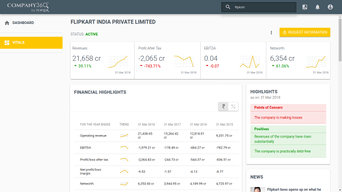Capital Structure
What do you mean by Capital Structure?
Capital Structure is a specific combination of debt and equity of a company required to fund its overall growth and operations. The debt comes in the form of loans or bond issues and the investment comes in the form of earnings retained preferred stock or common stock. Short-term debts are often considered an integral part of the capital structure.
If investors refer to capital structure, they are most likely pointing out the Debt-to-Equity ratio of a company. It provides an idea of how risky the borrowing activities of a particular firm can get. A business funded by debt usually has a more conservative capital structure and poses a significant risk to the investors. However, it is this risk that may contribute to the growth of the company.
Organizations that rely on more debt than equity for financing their assets and to support their operations have an aggressive capital structure which translates to higher growth rates whereas a company that relies on equity than debts for assets has a conservative capital structure with lower growth rates.
Key insights
- Capital structure refers to the percentage of capital at work in a business. There are primary two forms of capital: Equity capital and debt capital.
- A majority of experienced corporate management is trying to find the perfect capital structure for risk/reward payoff.
- Both small businesses and Fortune 500 companies are trying to determine how much of their start-up fund should be sourced from a bank loan without endangering their business.
Types of capital structure
There are primarily two forms of capital structure: Equity and Debt. Each kind has its own benefits and drawbacks.
-
Equity Capital
Contributed capital refers to the money that company owners have invested at the time of opening the company or have received from the shareholders as a price for the ownership. Retained earnings, on the other hand, are a part of the profit that has been set aside separately by the organization and contributes to the strengthening of the business or for funding growth, acquisitions, and expansion.
-
Debt capital
Long-term bonds are treated as the safest form of debt capital. This is because a business has several years or even decades in a few cases to clear its principal amount while paying just a percentage of interest until bond maturity.
-
Optimal capital structure
Capital structure varies across industries. For instance, for a company involved in oil extraction or mining, it is not desirable to have a high debt ratio. However, in some industries such as banking or insurance, it is necessary to have a high amount of debt as a part of their capital structure.
-
Financial Leverage
Importance of Capital structure
Capital structure is vital for any firm as it determines its overall stability. Here are some crucial factors that highlight the importance of the capital structure of a company.
- A firm having a sound capital structure has a higher chance of increasing the market price of its shares and securities that it holds. This will lead to a higher valuation in the market.
- A good capital structure ensures that the funds available are utilized effectively. It also prevents under or overcapitalization.
- It also assists the company in increasing its share of profits in the form of higher returns to the stakeholders.
- An appropriate capital structure helps in maximizing the capital of the shareholders while minimizing the overall cost of the capital.
Factors affecting capital structure
Here are the factors that play a crucial role in determining the capital structure.
-
Cost of capital
-
Degree of control
-
Government policies
Capital Structure Example
Let us consider company A which has ₹12, 50,000 in assets and ₹2,50,000 in liabilities. This implies that the company’s equity is ₹10, 00,000. The capital structure of the company is such that for every ₹ 2 of debt, the company is making ₹ 5. This company is also an example of a low-risk equity capital structured company.
Let us consider a rival company B which has $12, 00,000 in assets and ₹ 1, 00,000 in debt. This implies that the equity is ₹ 11, 00,000. Company B is highly leveraged as for every ₹1 of debt, the company has ₹11 in equity. This implies that the company has to focus on its returns to be able to finance its debts. This company would also be viewed as a greater risk by the lenders.
Capital Structure Formula
If you are wondering what factors are determinants of capital structure, then it is the equity and debt of a firm. Capital structure is generally expressed as a debt-to-equity ratio. The formula to evaluate the D/E ratio is pretty straight forward.
D / Y=Total Liabilities / Overall Assets
In Summary
The concept of capital structure simply indicates the way a business is financed. It is usually a mix of equity and debt that allows a business to keep its doors open. Business analysts and investors must carry out an accurate capital structure analysis before giving a recommendation or proceeding with investments. Careful capital structure planning can help a company in optimizing the cost of the capital and boosting its profitability.
Company360 plans

Know more about your vendors, clients and competitors.
Financials, scores, ratios, excels, reports and more.
@ INR 9000/quarter